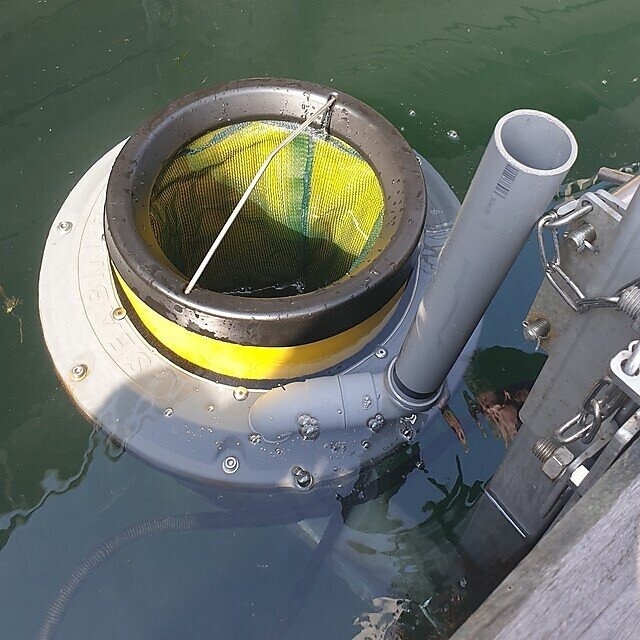To help acknowledge plastic pollution identified worldwide in marine environments, mechanical devices are increasingly being regarded as a prospective route forward.

Image Credits: University of Plymouth
However, new research by scientists at the University of Plymouth indicates that although mechanical devices get rid of plastics and other marine litter items, the amount of litter removed could be low in comparison and they can also capture marine creatures.
The research was headed by scientists from the International Marine Litter Research Unit at the University of Plymouth who have been analyzing the marine microplastics issue for over 20 years.
Their study was conducted in Plymouth (UK) and offers the first formal autonomous examination of a Seabin device’s performance.
The devices are built to suck water inwards without interruption, with a submersible pump that is filtered later. The cleaned water is sent back to the neighboring area, retaining the litter in the catch bag.
Globally, hundreds of devices have been installed, and they are reported to have trapped more than 2.5 million kg of litter from calm sheltered locations like ports, marinas, and yacht clubs.
In the study, it was identified that a sum of 1,828 items, 0.18kg of litter, was captured by the Plymouth device in a functioning time of 750 hours from April to June 2021. This was equal to 58 items per day, and it mainly included polystyrene balls, plastic fragments, and plastic pellets.
For every 3.6 items of litter, the Seabin trapped one marine organism—nearly 13 organisms per day—which included species like brown shrimps, sand eels, and crabs. About 60% of such organisms were dead upon retrieval, and the study implies that some creatures died after coming into the device.
At its current state of development, this study suggests that manual cleaning of ports, harbors, and marinas is more efficient and cost-effective. Notably, manual cleans are selective, and this could lessen any potential risk to marine life. Given the increasing reliance on technological innovations, formal evaluations are necessary to their efficiency as similar may apply to other types of device.
Florence Parker-Jurd, Study Lead Author and Research Assistant, University of Plymouth
While deploying, five manual trawls were performed at the same marina with nets from vessels or pontoons. Manual cleaning captured 19.3 g of litter on average in cleans of up to five minutes. In comparison, the Seabin trapped only the equal of 0.0059 g in a similar period.
In the study, the authors mention that—on the basis of their results—the device was not of much benefit in regard to marine litter removal in this specific position.
They also stated that the existence of these devices can precipitate techno-optimism, which is a dependence on technological advances, instead of systemic changes in the manufacture, usage, and removal of plastics.
The study was backed by the European Union INTERREG France (Channel) England-funded project, Preventing Plastic Pollution (PPP), and co-financed by the European Regional Development Fund.
“The UN Treaty to end plastic pollution presents an amazing opportunity to start to use plastics more responsibly, halting their accumulation in the environment. Ultimately, the best way to achieve that is by preventing the issue at its source rather than clean-up.”
However, the Treaty sets an urgent ambitious timeline and this could lead to increased investment in clean-up as opposed to longer-term systemic change. This study and others from my team highlight the critical importance of evidence to inform decisions about which type of intervention to invest in as we move to tackle this global environmental challenge.
Professor Richard Thompson OBE FRS, Head, International Marine Litter Research Unit, University of Plymouth
Journal Reference:
Parker-Jurd, F. N. F., et al., (2022) Evaluating the performance of the ‘Seabin’ – a fixed point mechanical litter removal device for sheltered waters. Marine Pollution Bulletin. doi.org/10.1016/j.marpolbul.2022.114199.